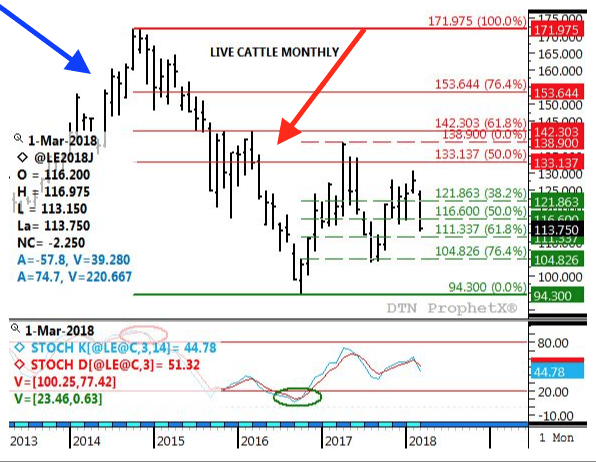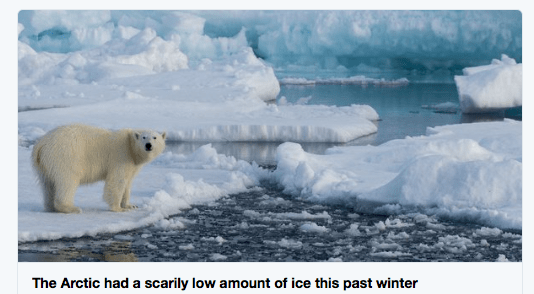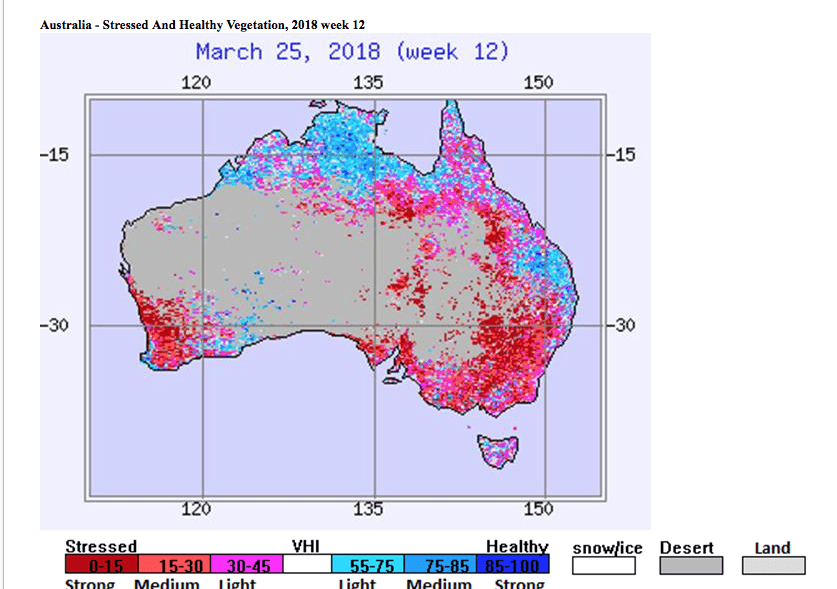Plains drought causes Cattle Prices to Crash
The expansion of the nation’s beef producing herds has resulted in a 30-40% decline in cattle prices over the last two years. This growth is a sign of good times for the beef industry after droughts in the Plains region in 2011 and 2012 sharply curtailed supplies. However, drought has once again plagued the region, particularly in Texas where most of the feedlots are located. For example, Amarillo’s precipitation statistics show record breaking drought measurements. These have surpassed the city’s previous record streak of 75 consecutive days without rain ending in January 1957. The epicenter of the current drought lies in the region including SW Kansas and the panhandles of Texas and Oklahoma. Roughly 60% of America’s herds are in this area.
Recent plummeting livestock prices followed the drought in the wheat pasture region of the High Plains. This let to sending cattle to feedlots earlier than usual. The result has been a 9% increase in cattle on feed and a 7% increase in placement. That’s the largest placement of cattle on feed during February and March in almost 12 years. There are nearly a million more cattle on feed this year than in 2017.
Will cattle prices rebound? Much depends on the weather, believe it or not. If the Plains drought continues through summer and it is hot, then cattle would lose weight and this would lower beef supplies about a year or so down the road and help prices recover.
Cattle prices (above) soared from 2012-2013, in part due to much lower U.S. beef production brought on by the droughts of 2011-2012 and higher corn prices. The higher corn prices forced ranchers to cut back on breeding calves and impacted U.S. cattle production about 1-2 years later. However, since the supply contraction in 2013-2014, a return to lower corn prices, good weather and excellent pastures in Texas and Kansas the last few years, has resulted in an expansion of production pressuring prices. If the present drought continues into next year, then the cattle-price cycle will reverse, once again and result in higher beef prices both in the futures markets and at the grocery store.
Arctic warming the greatest ever as Australia’s drought grows
Sea ice in the Arctic is at some of the lowest levels ever recorded. There is no doubt that weather across the globe is once again becoming extreme. The severe cold winter in Europe and U.S. Plains drought is likely related to what is happening over the North Pole. The dryness in Australia is usually related to El Nino events, but climate change is probably contributing to the frequency in droughts, not only in Australia but also in California.
The red region you see below will be crucial to upcoming wheat plantings in Australia
















